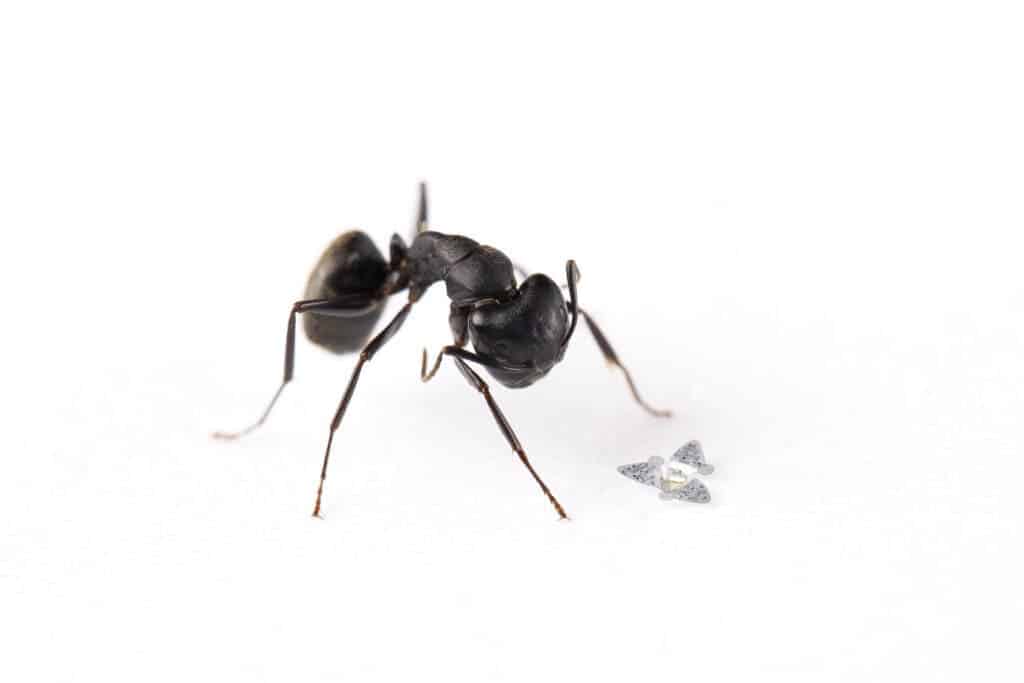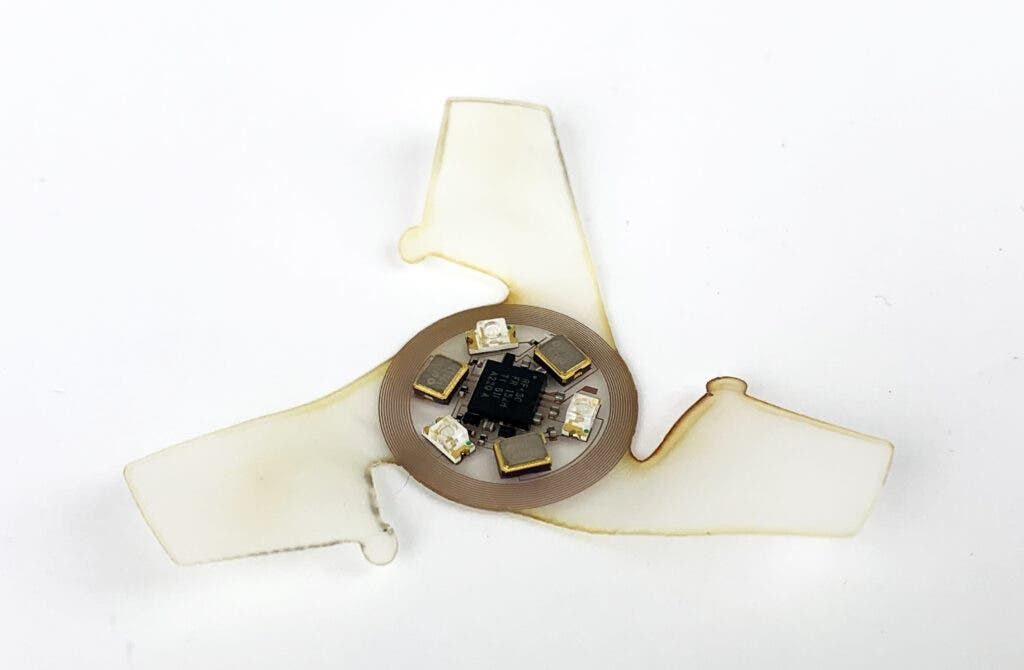
There’s something mesmerizing about the elegant whirling motion of the maple’s leaf propeller seed spinning through the air before it gently touches the ground. This is not just some romantic autumn scenery, though. Although trees are static they can disperse over relatively vast distances on their own by evolving these sort of sophisticated, aerodynamic seeds. Inspired by nature, scientists have now borrowed the maple seed design, as well as others, to give microchips wings.
These amazing microfliers are about the size of a grain of sand, but despite their tiny size they pack enough electronics and sensors to monitor their surroundings, store data, and communicate wirelessly. And thanks to their design, these fidget-spinner-like devices can fly like a helicopter without a motor or engine.
The Northwestern University team of engineers behind this remarkable project believes a swarm of these microfliers could prove highly useful for an array of applications, whether it’s scouring the atmosphere for pathogens or particle pollution.
“We have long-standing research interests in ultra-miniaturized electronics and sensors for the human body – as an extension, we began to think about uses of adapted versions of those devices for monitoring the environment. A key challenge in that context is in distributing large, wireless collections of such devices over large areas and designing them in a way to maximize their interactions with the environment (e.g. the atmosphere for pathogens and/or particulate pollution). Active flying capabilities might be interesting in this context, but passive schemes like those used by plants and trees, as bioinspired ideas, are particularly attractive due to simplicity,” John A. Rogers, Professor of Materials Science and Engineering, Biomedical Engineering and Neurological Surgery at Northwestern, told ZME Science.
Better than nature’s design
Propeller seeds employed by some tree species evolved over hundreds of millions of years. Over time, the most adapted seed designs that interacted with wind patterns for the longest possible period of time took over and became the norm.
When you encounter a design that has been tried and tested over millions of years, it’s easy to see why Rogers and colleagues jumped onboard. But they didn’t merely copy these designs — they tweaked and built upon them, eventually surpassing nature.
After studying the aerodynamics of numerous types of plant seeds, the researchers were most impressed by the star-shaped seeds of the tristellateia plant, a flowering vine. Using this design as a starting point, the engineers devised various microflier versions, including one with three wings whose shape and angles are similar to the tristellateia seed.

These designs were polished even further after they went through a battery of tests using both computational methods and empirical measurements of airflow. The end result is a super-advanced microflier that is capable of falling with more stable trajectories and a slower velocity than similar propelled seeds found in nature.
“Forming the 3D collection of wings in ways and with materials that naturally integrate with millimeter-scale electronic systems was a key challenge. We were quite pleased to find that we could not only make and optimize the structures, but that their performance could exceed that of naturally occurring seeds with sizes that are far smaller,” Rogers proudly recounted.
To demonstrate the abilities of these microfliers, the Northwestern scientists embedded sensors, a power source that harvests energy from the wind, memory storage, and an antenna for wireless transfer of data to third-party devices — all within a one-millimeter frame, wings included.
Some microfliers were fitted with sensors that detect particle pollution in the air, others had pH sensors that are useful for monitoring water quality or photodetectors that measure different wavelengths of sunlight.
“Seeds” that monitor the environment
A swarm of these could be dropped from a high or low altitude, depending on how large the surface area of interest for monitoring is. “We envision areas that might range from a fraction of a square mile to several square miles,” Rogers said. They could be used routinely to monitor the environment or during emergency situations, such as a chemical spill to quickly assess the damage.
Unlike traditional monitoring instruments, having hundreds or thousands of these microfliers covering an area could provide much more granular data with a very high spatial density. On the other hand, that sounds like a lot of litter — but the scientists thought ahead, though.
When deployed in the field, the researchers plan on using microfliers made from degradable polymers and dissolvable integrated circuits that safely dissolve in water. So essentially, after the tiny devices finish their mission, they should seamlessly disintegrate into the environment.
This is just the beginning though. Just like nature fostered multiple designs adapted for various environments and purposes, so do the researchers plan on working on new microflier versions.
“We are working on sensors for biological species – pathogens, bacteria, etc – and for heavy metal contaminants. Advanced wireless electronics, power supply strategies and so on will also be important. As a longer-term goal, active, flapping fliers could be interesting. We are also exploring different types of seed designs – parachuters, flutterers, gliders, etc – and we are now demonstrating environmentally degradable electronic sensors as payloads,” Rogers said.






